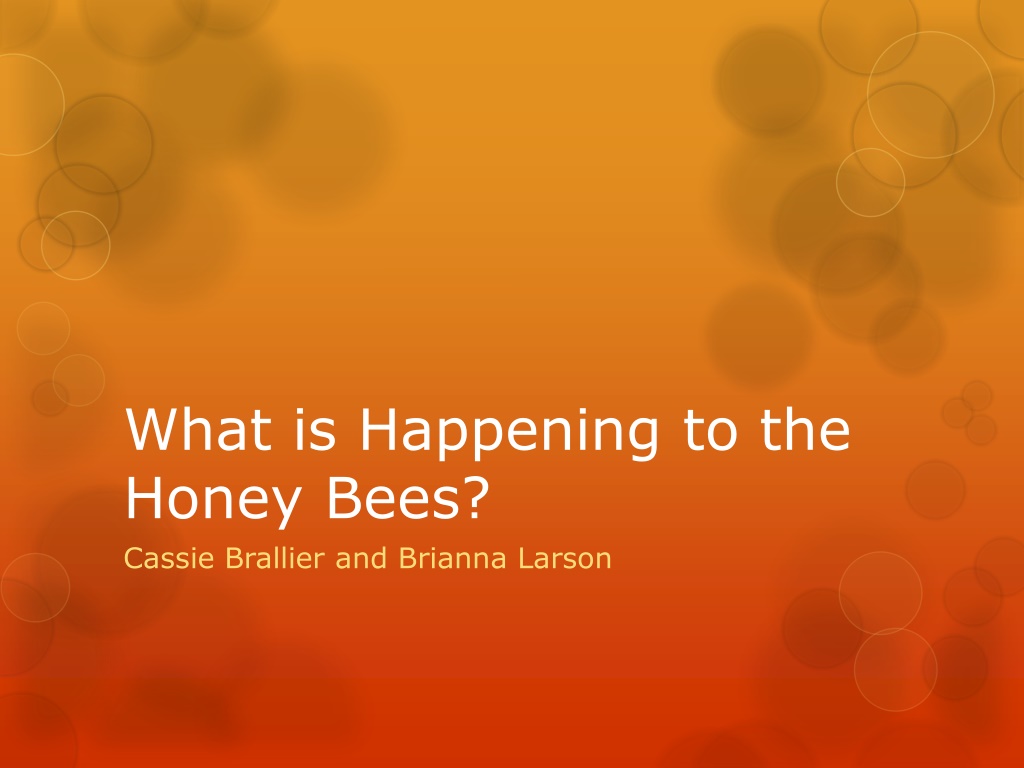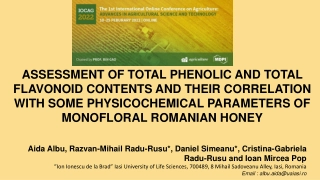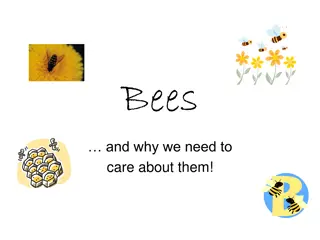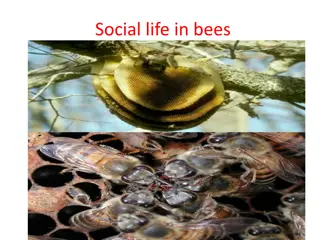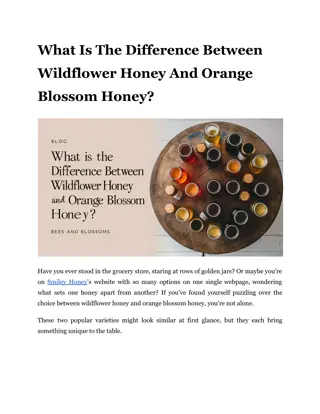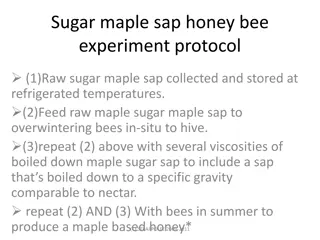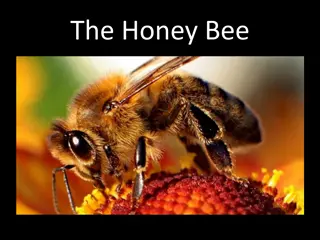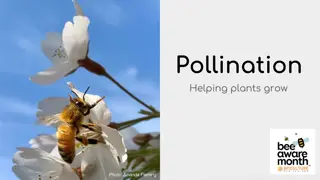The Devastating Impact of Colony Collapse Disorder on Honey Bees
A profound look into the catastrophic effects of Colony Collapse Disorder (CCD) on honey bee populations, causing the loss of millions of beehives and threatening crop pollination. Scientists attribute CCD to a deadly mix of fungicides and pesticides found in pollen samples, disrupting bees' neurological functions. The revelation of 21 harmful chemicals in bee hives on the east coast underscores the urgent need for action to save these essential pollinators. Sources provide further insights on the alarming situation.
Download Presentation

Please find below an Image/Link to download the presentation.
The content on the website is provided AS IS for your information and personal use only. It may not be sold, licensed, or shared on other websites without obtaining consent from the author. Download presentation by click this link. If you encounter any issues during the download, it is possible that the publisher has removed the file from their server.
E N D
Presentation Transcript
What is Happening to the Honey Bees? Cassie Brallier and Brianna Larson
Introduction A large group of honey bees that pollinate $30 billion worth of crops in the US died off. Scientists had struggled to find out more about the Colony Collapse Disorder (CCD) that wiped out the estimated 10 million beehives worth $2 billion. This die-off happened over six years
Possible Cause Scientists at the University of Maryland and the US Department of Ag discovered a mix of fungicides and pesticides that contaminated the pollen the bees collected.
Information About Samples In one sample from hives on the east coast, scientists discovered 21 chemicals. These chemicals and pesticides can slow a bees neurological functions, including behavior and memory.
Sources http://qz.com/107970/scientists-discover- whats-killing-the-bees-and-its-worse- than-you-thought/ http://www.cbsnews.com/news/are- pesticides-killing-off-honey-bees/
